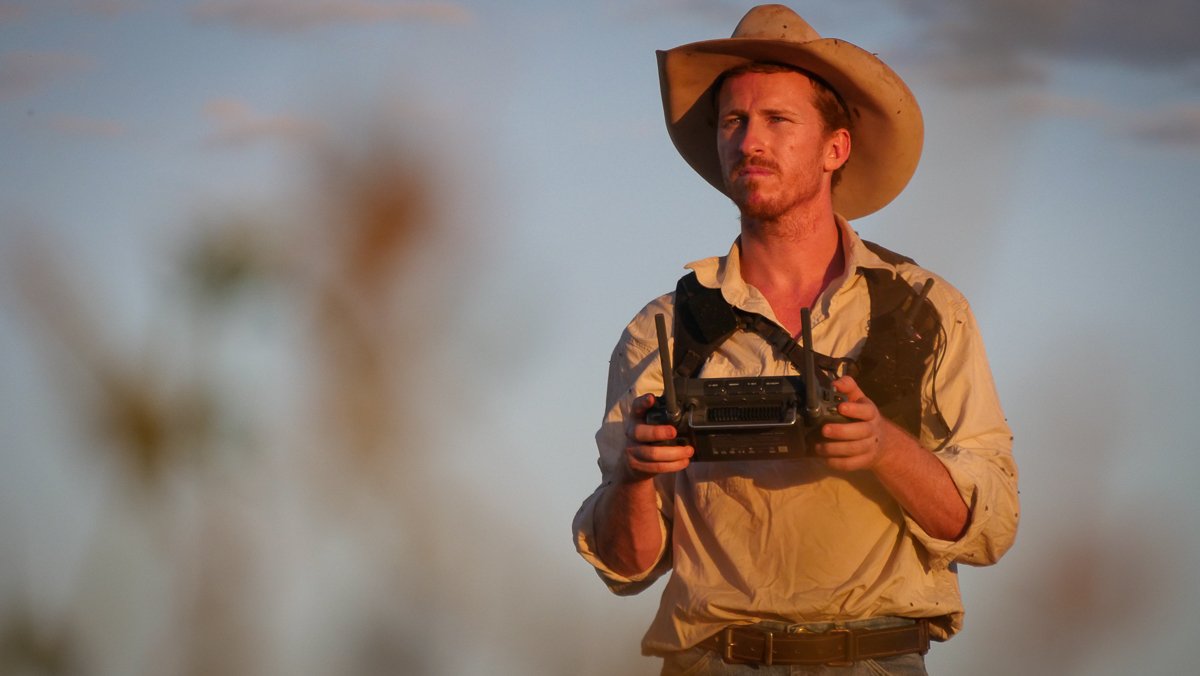
Australian livestock rancher Luke Chaplain is innovating to make the work of rounding up animals and herding them into or back from grazing lands faster, more efficient, and less costly – and using drones carry the job out from on high.
Even as Chaplain upholds a family farming tradition as the fourth-generation member to raise livestock, he’s been working to change the methods of how animals are herded around pasturelands with drones. His most recent accomplishment demonstrating the improvements arial tech cam offer what Aussie call “mustering” came earlier this month at a nation industry congress, where members watched scores of cattle in Queensland rounded up by UAVs piloted from an entirely different state. The remote drone roundup was said to be the largest ever.
“We wanted to show the livestock sector the technology coming through that could really modernize their operations,” Chaplain told DroneDJ by email. “I’m looking for more flight time and also a VTOL to do long range inspections of rural properties.”
Efforts to secure beyond visual line of sight (BVLOS) authorization for that demonstration arose from the most recent in Chaplain’s recurring interactions with Australia’s Civil Aviation Safety Authority (CASA), which he’s hoping will liberalize rules for livestock and other rural operators to enable regular remote deployment.
He’s making that push as the owner of SkyKelpie, the drone company Chaplain founded in 2022 to promote use of craft he first began flying in 2017. The idea behind that business atop his Queensland ranching work is simple: help other livestock producers discover, learn to use, and operate UAVs to speed the work of mustering, and make it less expensive.
To facilitate that transition, SkyKelpie also sells equipment packages built around DJI drones – Air 3, Mavic Enterprise Thermal, and Matrice 30T. Their prices run dramatically less than helicopters that many ranchers use for roundups over vast areas, or even motorcycles frequently relied on.
Meanwhile, craft with thermal sensors pick up heat signatures of stray animals better than human herders who need to see them beyond the bustle surrounding them.
Though farmers and livestock producers are reputedly slow to embrace change, Chaplain says there’s already been movement toward the skies across his native Queensland. According to his reckoning, he and his customers have rounded up over 100,000 head of cattle and other animals thus far, with word of the faster results and lower costs of that steadily spreading.
Attention of ranchers will likely increase considerably if CASA moves to both facilitate and increase the number of BVLOS waivers it issues.
“It’s entirely possible to obtain BVLOS (authorization) for these types of operations, but it’s quite a lengthy and costly process,” Chaplain says. “We encourage the regulator to see the benefits this technology can have on the agricultural sector and be more motivated to streamline approvals.”
His big objective is getting CASA to issue open-ended waivers, or change BVLOS rules for users in remote areas. Not only will that free livestock producers from having to be close to drones during operation, but also enable Chaplain’s current project: establishing networks of docked UAVs that SkyKelpie can operate for customers no matter where they are.
“I’ve got an application in to get a mobile remote operation center so that I can set up and operate a drone from a docking station from wherever I have that remote center set up,” he told the Australian Broadcasting Corporation in its report this weekend. “The regulator has been looking to progress further on rural and remote drone operations, which we encourage.”
Awaiting that, SkyKelpie will continue performing drone mustering services for clients, or training and equipping those wanting to pilot their own. Clearly bitten by the tech bug, meanwhile, Chaplain is now also working to bring the UAV roundup experience to people who don’t necessarily have livestock to bring home off the range.
“I’ve also launched a prototype of a training simulation game where people can learn to fly a drone and muster cattle in a virtual environment,” he says. “We’re also going to develop a full recreational game for the global gaming community. I’m going to approach brands to advertise their products in the game.”
Image: SkyKelpie
FTC: We use income earning auto affiliate links. More.


Comments